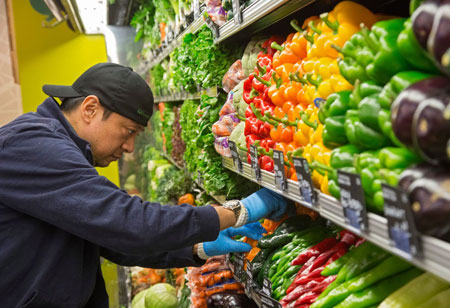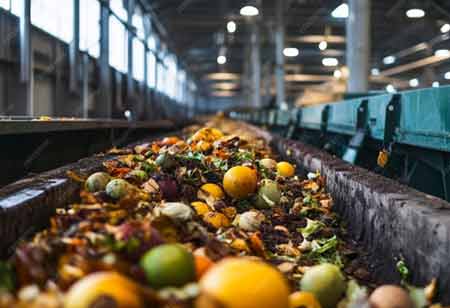THANK YOU FOR SUBSCRIBING
Be first to read the latest tech news, Industry Leader's Insights, and CIO interviews of medium and large enterprises exclusively from Food and Beverage Tech Review
How can Supermarkets Assimilate Traceability to Avoid Food Wastage?
Deciding whether the food is edible depending on a path of ink is resulting in wastages of 30 to 40 percent of U.S. entire food supply. Would traceability factor utilization in the packaging of food products help?

By
Food and Beverages Tech Review | Wednesday, September 04, 2019
Stay ahead of the industry with exclusive feature stories on the top companies, expert insights and the latest news delivered straight to your inbox. Subscribe today.
Deciding whether the food is edible depending on a path of ink is resulting in wastages of 30 to 40 percent of U.S. entire food supply. Would traceability factor utilization in the packaging of food products help?
FREMONT, CA: A household discards an average of food worth $1500 every year. The value accounts for 30-40 percent of the food supply across the U.S. One of the major causes behind this high rate of food wastage is the confusion surrounding the meaning of food description and date labels on the products. A survey revealed that 84 percent of Americans waste food due to a confusing date label. The enormous figures demonstrate the urgent need for change in the systems necessary.
Steps a food manufacturer can take to reduce the wastage of food based on label confusion:
· Misread or Misled, Both Need to Stop:
Supermarkets waste up to $300 million worth of food, while the hospitality sector wastes an even higher amount worth three billion pounds. The most common reason being damaged produce, or also the demand is low during that period. But, most wastage is due to the non-compliance with supplier standards and then again the same with the buyer standards.
The most commonly recognized food date labels that have fuelled the confusion are “best before” and “use-by” labels. A “best before” label in the most basic sense describes that the product if consumed after the recommended date, the quality will not be the finest, but it is safe to be consumed. But, in general, the food is considered to be unsafe for consumption after the best before date.
Similarly, a “use-by” date on any given food product is a safety risk. Products like meat, fish, and dairy should all be consumed before the specified date. In addition to this, many labels like “expiry,” “sell by,” and “display until” add more confusion.
· Each Product A Covert Agent For Waste Tracking:
The mounds of perfectly edible food in the form of discarded waste is on the rise. To avoid this phenomenon, the most simplified solution is to standardize food date labels across stores and supermarkets. The approval for a Call to Action in an appeal to regulate food date labels worldwide by 2020 is given the Consumer Goods Forum (CGF), to curb the food waste by 2030.
Until then, the food manufacturers can assist; even reduce the causes of food wastage by implementing traceability software.
Traceability option gives the manufacturers to track and record data regarding the food products in all stages of the production, and distribution to the consumers. This process will not only determine the cause of wastage even clearly and would influence the figures of the wasted food that is safe to eat.
With the concept ‘farm to table’ becoming increasing popular, more people have exhibited interested to know and understand where their food comes from. If consumers possessed the ability trace back to where the meat was slaughtered, packed and how long ago was it carried out. They might reconsider throwing away food that is safe to eat, ultimately reducing waste.
Manufacturing Operations Management suite (MOM) is traceability software that can create a digital footprint of a product by integrating all its features and movement into a database. For example, a producer from the farms could file all the information of the livestock into a central system. It includes the identification number, the age of the animal, what date it was slaughtered or milked, the date of packaging, and distributed location.
A QR (quick response) code or a barcode representing the information could be printed out and pasted on to the packaging. Consumers can scan the code to obtain the product data once the product is on supermarket shelves.
With tons of edible food being wasted each day, the food manufacturers need to support the diminution of food waste in any way possible. Any method that is ISO 22005:2007 compliant by a minimum of the traceability standard can be followed.
The idea of standardized date labels and scan codes will not only educate the consumer with more knowledge regarding a product’s journey and process, but it will also possess enough information for consumers to make informed decisions before discarding a food product. All factors can be considered and weighed in, rather than following a “use-by” or “expiry” label.
I agree We use cookies on this website to enhance your user experience. By clicking any link on this page you are giving your consent for us to set cookies. More info







